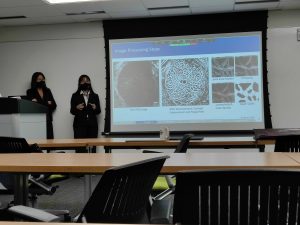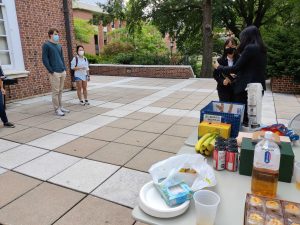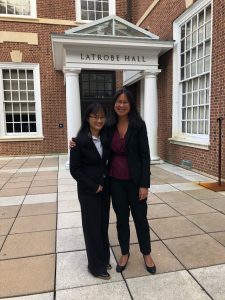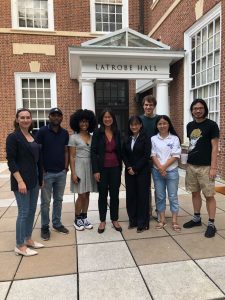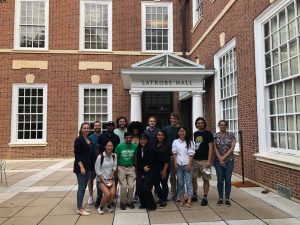Congratulations to Dr. Yik Tung Tracy Ling for her successful dissertation defense! It was our lab’s first dissertation defense in the COVID era and participants joined in person as well as on Zoom. The hybrid set up allowed many alumni of the Nguyen Lab and ME Department to join in the open portion of the defense, and made the special occasion feel even more special.
The Effect of Microstructure on the Pressure-Induced Mechanical Responses at the Optic Nerve Head
Glaucoma is the leading cause of irreversible blindness in the world. Patients suffer from gradual loss of vision due to degeneration of the retinal ganglion cell (RGC) axons at the optic nerve head (ONH). A major risk factor for glaucoma is intraocular pressure (IOP) and the increase in IOP initiates biomechanical events at the ONH prior to axonal damage. However, the exact injury mechanism remains unknown. Lamina cribrosa (LC), as a load bearing structure that spans the ONH, serves to protect the RGC axons from IOP-induced deformation. The LC is made up of a meshwork of collagen beams. Within the LC, the non collagen pore spaces are spanned by a network of astrocyte cells. Together, the LC structure and the astrocytic network provide mechanical support to the RGC axons as the axons exit the eye wall and enter into the optic nerve canal. Inflation tests of the human eyes have shown that IOP-induced strain response in the LC varied regionally. The pattern of the strain variation corresponded to the pattern of axonal damage in glaucoma patients. It is hypothesized that variations of microstructure in the LC contributed to the variations in IOP-induced strains. This may translate to unequal deformation of the astrocytic networks among different LC pores, causing some axons to be more susceptible to glaucomatous injury. Therefore, the objective of this work was to first investigate the effect of structural properties of LC on the regional strain responses, then to compare the structural difference in astrocytic network after IOP elevation, and finally to probe into the effect of astrocytic structure on the strains experienced by the axons using finite element modeling.
I
